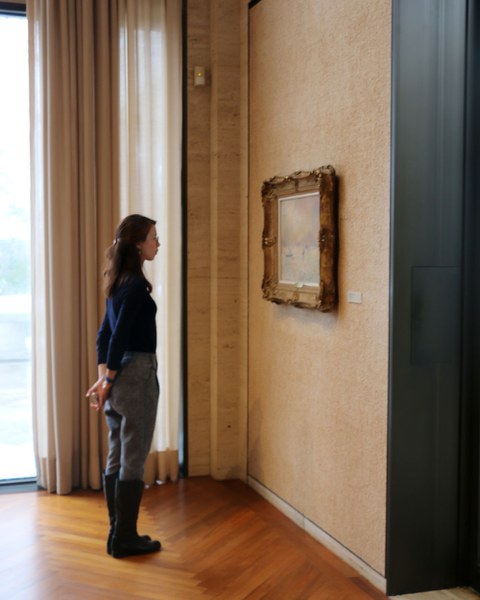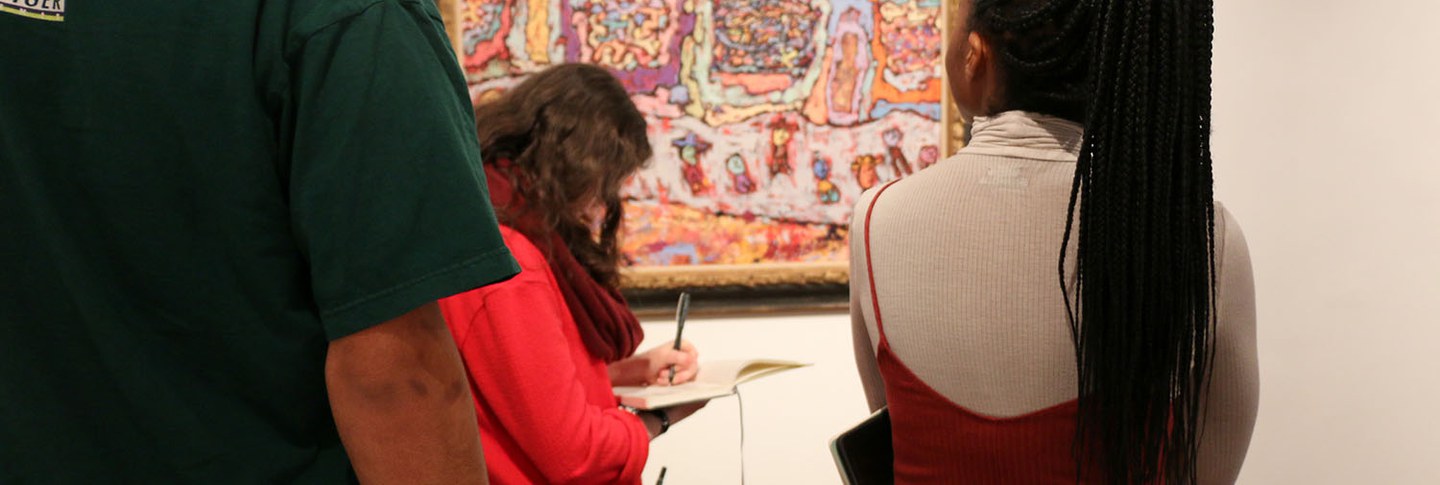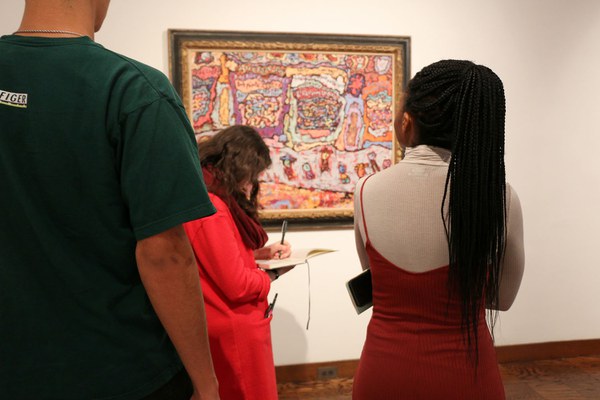By Lauren Toman
As DC begins to feel the brisk chill in the air and see the leaves falling, the time is coming for us to once again welcome Harvard undergraduates to our Wintersession course, “Cultural Philanthropy in the Museum Space.” This is the seventh year Dumbarton Oaks has provided the course, which immerses students in the world of cultural institutions to see the power of or need for philanthropy while discussing the complexities of financial gifts. Last year’s course was virtual due to the COVID-19 pandemic, but this year we’re excited to welcome students back to campus for enriching in-person conversations about cultural philanthropy.

While cultural philanthropy is always an interesting topic of discussion, now more than ever it is crucial to understand its impact. The global pandemic and societal demands for justice and equity for marginalized groups have called attention to the need for changes in how cultural institutions operate and connect with their communities. But funding shortfalls and other financial pressures can hamper progress on these fronts, and philanthropy’s critical role in supporting institutions that preserve cultural spaces and provide platforms for underrepresented voices has become increasingly clear. Understanding the longstanding history and influence of philanthropy in the American cultural landscape is thus urgent and necessary for future field leaders. These conditions are a starting point for Wintersession students to begin their exploration of cultural philanthropy; during their weeklong stay at Dumbarton Oaks, students look at cultural philanthropy today and investigate its legacy in the United States.
When examining the history of cultural philanthropy in the US, Dumbarton Oaks is itself a notable example of how personal philanthropy can shape the cultural landscape. The institution as we know it exists due to charitable donation by its founders Mildred and Robert Bliss. In the 1930s the couple decided to transform their Georgetown estate into a museum, library, and research institution for those in the humanities to further their scholarship. In addition to establishing facilities for scholars, they also formed an endowment to keep the museum and research institution operational and to offer fellowships for scholars and artists. On November 1, 1940, the Blisses gave Dumbarton Oaks to Harvard University, with the expectation that it be used foster the arts and humanities. Before her passing, Mildred Bliss reminded Harvard of the intent of the gift in a letter she wrote:
In applying these gifts to Harvard, I call upon the present and future President and Fellows of Harvard College and all those who determine its policies, to remember that Dumbarton Oaks is conceived in a new pattern, where quality and not number shall determine the choice of its scholars; that it is the home of the Humanities, not a mere aggregation of books and objects of art; that the house itself and the gardens have their educational importance and that all are of humanistic value. . . . I charge those responsible for carrying forward the life at Dumbarton Oaks to be guided by the standards set there during the life-time of my husband and me. . . . The fulfillment of this vision of high intellectual adventure seen through the open gates of Dumbarton Oaks will add luster to Harvard, to the academic tone of our country and to scholarship throughout the world.
The Blisses’ gift has lived on as Mildred hoped; it has provided scholarly opportunities for hundreds of fellows, produced over three hundred publications in Garden and Landscape, Byzantine, and Pre-Columbian Studies, and sustained the museum and gardens for public enjoyment, offering one example of the reach of philanthropy in DC’s cultural landscape. Wintersession students learn about this and other impactful stories of cultural philanthropy that produced many of the museums in the nation’s capital, with in-person site visits and intimate conversations with museum leaders from the DC area. By the end of the course, students have with a better understanding of cultural institutions, cultural philanthropy, and how they shape our society.
Lauren Toman is postgraduate cultural philanthropy fellow.

